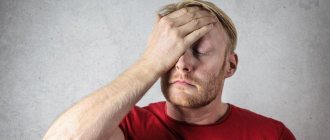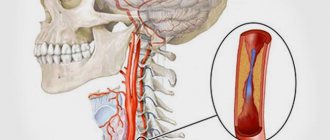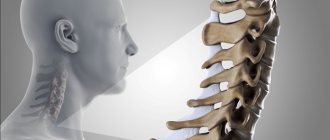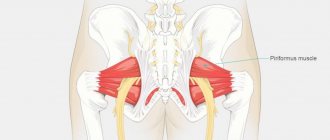Everyone has experienced headaches (cephalalgia). The cause of the occurrence can be absolutely anything: from serious disturbances in the functioning of the body to minor ones. But it is worth noting that painful pulsation in the head is a “bell” in order to go for a diagnosis.
This type of pain may indicate serious problems.
The main causes of cephalalgia
Acute pain in the head and throbbing prevents a person from living a normal life and doing business. If pain appears once, this does not necessarily indicate the presence of dysfunction in the body. In cases where a person experiences cephalalgia more and more often, and the pain lasts longer and longer, there really is a problem in the body. It needs to be eliminated, and only a specialist can handle it.
Doctors identify a number of main reasons that cause this symptom, namely:
- VSD (vegetative-vascular dystonia);
- atherosclerosis;
- sinusitis, sinusitis;
- migraine;
- eye diseases;
- hematomas;
- tumors;
- neuralgia;
- stress.
Vegetovascular dystonia
Pulsating pain is called background pain. It occurs due to a decrease in the tone of cerebral vessels, stagnation of blood, and spasms of the arteries. The difference between pain that appears due to VSD is that “jolts” do not depend on the person’s pulse.
Atherosclerosis
If a patient has problems with the vascular system, he begins to suffer from pulsation in the temporal and occipital areas of the head. But the zones can change, and the sensations can become oppressive over time.
Sinusitis, sinusitis
The reason lies in the cold you suffered, namely its complications. In order not to encounter cephalalgia, it is imperative to cure all viral and infectious diseases. The same applies to a runny nose.
Migraine
Migraine is manifested by a pulsation, which patients describe as if it were pounding right under the skin, and the pain is localized in one part of the head at the top.
Scientists have not yet proven the definitive causes of such pain, and the exact forms of manifestation of the disease have not yet been determined.
But still, there are several possible causes of migraine development, namely:
- food products (several types of cheeses and sausages);
- weather sensitivity;
- smells of ammonia, ammonia, perfume;
- serious physical activity;
- emotional outburst;
- uncomfortable body position for a long time.
A migraine can torment a person for more than one day. There are cases when the pain lasts 3 days. Most often, cephalalgia caused by this problem manifests itself in unbearably severe pain, and can go away after a few hours. Doctors note the fact that females suffer more from this.
At the end of a migraine attack, a person notes that he has severe weakness and a tendency to sleep.
Eye diseases
The following reasons that can provoke pulsation are eye diseases. A large number of people turn to specialists with complaints such as blurred vision, nausea, dizziness, photophobia, and acute pain radiating to the eye. A competent doctor will immediately determine that these are symptoms of angle-closure glaucoma - high intraocular pressure.
Cephalgia can develop due to tension in the optic nerve, which occurs due to incorrectly selected diopters of glasses or lenses. But in such cases, dizziness also appears.
Hematomas, tumors
Pulsating pain of a strong nature, which is clearly localized in one of the areas of the head, may indicate the presence of damage or a neoplasm. Also in this case, it is worth noting the presence of nausea and vomiting.
If such symptoms are noticed, you must quickly contact a specialist to diagnose a tumor or other problem and begin to treat it.
Stress
All overwork and emotional turmoil can result in severe headaches. Constant nervous tension and stress can create a “fellow traveler” for you for the whole day, namely cephalgia.
Neuralgia
Another common reason why such unpleasant sensations occur in the temple and head area. Dental problems, trigeminal neuralgia - all this provokes pain.
Other causes of cephalalgia
Osteochondrosis and a number of other problems associated with the cervical spine can provoke throbbing pain.
In winter, pulsation in the back of the head often occurs. This is explained by hypothermia and a sharp narrowing of blood vessels.
Lack of normal rest, disruption of sleep quality and routine can cause headaches.
Bad habits are also included in this list of “provocateurs”. They not only harm health, but can also cause discomfort to a person in the form of cephalgia. If a person often drank coffee and decided to abruptly stop, this can also provoke this problem, since the blood vessels are not able to return to normal so quickly.
Not everyone knows, but what we eat can also cause throbbing in our temples. These products include: chicken liver, cheeses, sausages, bacon, nuts, yogurt.
Causes
Typically, the occurrence of stabbing pain is associated with a violation of the structure of the blood vessels of the brain. Sometimes this condition is not accompanied by other symptoms or disorders. Stitching “injections” in the forehead area can also occur in healthy people (about 3%). However, the vast majority of cases of this condition occur in patients suffering from migraine (46%).
In addition, the cause of acute stabbing pain can be:
cluster or cluster headaches, sports, head injuries, meningitis, ruptured aneurysm, the appearance of neoplasms; otitis and some other diseases.
Migraine is characterized by acute pain that occurs in the temple and forehead, gradually spreading to other areas. It is recorded that this pain mainly appears on the left. Often the appearance of pain is preceded by an “aura”: tingling of the skin, visual hallucinations. If the mother has migraine, a similar diagnosis can be made in the child.
Cluster pain is characterized by pulsation and clear periodicity. Usually occurs in the orbital area and may be accompanied by redness of the eye and worsening runny nose. This stabbing pain can occur due to the consumption of alcohol and certain foods. Acute injections localized in the back of the head may be associated with hypertension or cervical osteochondrosis. In this case, patients more often complain of discomfort on the left side. Now the age threshold for these diseases has significantly decreased, which is facilitated by the child spending a long time in front of the computer.
A similar condition is observed if stabbing pain occurs after intense exercise. As a result of stress, blood pressure may increase and a vessel or nerve may be pinched. You should especially pay attention to this symptom if, after taking painkillers, pain in the back of the head or forehead area appears again and becomes dull, pressing, requiring the use of stronger drugs.
As a result of head injuries, sometimes there is a displacement of the brain, which subsequently results in the periodic appearance of acute stabbing pain. If there are no other accompanying symptoms, even with a long-standing injury, it is necessary to undergo appropriate examination. It is important to always respond to a child's complaints if relevant injuries have occurred.
Severe stabbing pain appears against the background of the development of acute inflammation of the meninges - meningitis. It does not appear only at one point. At the same time, the muscles of the back of the head gradually tense, the temperature rises, nausea and vomiting appear.
Similar symptoms, supplemented by acute pain in one point, loss of vision and orientation in space, can occur as a result of internal bleeding, which occurs when the carotid artery is destroyed or an aneurysm ruptures. Often the patient in this state loses consciousness. If stabbing pain is recorded only on one side, this may indicate an inflammatory process that accompanies:
otitis; pulpitis; glaucoma.
Often sharp “pricks” in the back of the head or crown accompany colds, which are complicated by sinusitis, sinusitis and other complications of influenza or acute respiratory infections. Acute cephalgia is a secondary symptom of the development of neoplasms. This is preceded by a long-term dull pain, which over time begins to be felt more intensely. There is a general deterioration in the body's condition. The most painful period occurs in the morning. Sometimes the cause of an acute headache on the left side, around the forehead or on the top of the head is psychological problems. As a result of experienced stress or the presence of a difficult life problem, fear, dissatisfaction, a person experiences serious pain. In a child, this condition can provoke mental fatigue as a result of intensive study.
The appearance of stabbing pain in the forehead or crown can be caused by vision problems. For example, incorrectly selected glasses or lenses contribute to tension in the visual muscles, which provokes headaches. Even an incorrect bite due to constant pressure in the temporomandibular joint creates conditions for the occurrence of sharp “pricks” on the right or left side, depending on the structural features of the face. The same condition is observed if the muscles of the jaw or neck are cold, inflamed, or overstrained. One of the very common causes of acute “injections”, especially on the left side, is the patient’s weather sensitivity. They are most felt in the forehead area.
Cephalgia in children
Pulsating discomfort in a child that is not accompanied by fever, cough and runny nose should alert parents. In such cases, it is important to consult a doctor. Such manifestations may indicate problems with the child’s health.
The phenomenon can be triggered by:
- disease of the vascular system;
- neuralgia;
- migraine;
- injury;
- emotional condition;
- poor nutrition;
- the presence of provoking external factors.
Cephalgia and pregnancy
Most often, girls in this position suffer from migraines, and the illness appears from physical activity, food, lack of sleep, stress, and fatigue. There are also other reasons that cause throbbing pain in women in the position:
- VSD;
- blood pressure problems;
- problems with blood supply;
- voltage;
- disorders in the brain;
- sinus inflammation;
- glaucoma.
For pregnant women suffering from cephalalgia, there are recommendations to combat discomfort, namely:
- do a light massage;
- restful sleep;
- take a contrast shower.
Regarding pain relief with medications, in this case it is important to consult a specialist, since not all painkillers are approved for pregnant women.
Elderly age
The older a person is, the more often he suffers from throbbing pain in the head, and most often this is associated with pressure and changes in the cervical spine. But there are also a number of reasons that pose a danger to older people, and these include:
- presence of a tumor in the brain;
- presence of hematomas in the brain;
- trigeminal neuralgia;
- temporal arteritis;
- intoxication;
- presence of infectious diseases;
- stroke.
Pain in the head can also be a consequence of menopause in women, weather sensitivity, which occurs in any gender, and depression.
Causes of pain by nature and location
You can determine the cause of throbbing pain in the head by analyzing the place where the patient feels it. Sensations can move around the skull, but most often they appear in a specific part.
Pain in the back of the head
Pain in this part of the skull is characteristic of high blood pressure. It also manifests itself as a pressing character, becoming more pronounced if you turn and tilt your head. It is worth noting that such a sensation in the back of the head can warn of the development of a stroke.
But there are also such provoking factors that cause pain in the back of the head as diseases of the cervical spine, namely:
- scoliosis;
- osteochondrosis.
The pain disappears when the cause is eliminated, and with it the patient feels a relieved state in the shoulders and neck, cramps disappear, and sleep improves.
Pain on the left
Characteristic of migraine. Associated symptoms:
- visual impairment;
- disturbance of consciousness;
- dizziness;
- nausea;
- photophobia;
- loss of orientation.
Pain on the right
Pulsation of a jerking nature indicates trigeminal neuralgia. The pain affects the area of the eye, forehead, temple and jaw. In cases where the pain persists, you need to consult a doctor.
Discomfort in the temporal region
A number of diseases can manifest themselves in this way, for example:
- trigeminal neuralgia;
- migraine;
- increased blood pressure;
- intoxication;
- VSD.
Frontal region
Pain in the frontal part of the head is accompanied by convulsions, disturbances of consciousness and blurred vision. They may indicate increased intracranial pressure.
Also, pain in the forehead can be caused by sinusitis, respiratory infections and eye diseases. It may also be the result of the development of a malignant brain tumor.
Discomfort when moving your head
If unpleasant pulsating sensations in the head become more pronounced while moving the head, this may indicate diseases such as:
- neuritis;
- osteochondrosis;
- inflammation of the sinuses.
Symptoms typical for such cases are:
- nausea;
- prostration;
- dizziness;
- fever;
- partial paralysis
Patients with such complaints are promptly sent for hospitalization and treatment.
Pain and nausea
The cause of such changes in the body may be food poisoning. Throbbing in the head and nausea indicate changes in the brain or nervous disorders. The attack can also be triggered by head injuries.
Pulsation in the head without accompanying pain
The most common cause of such changes is disruption of the central nervous system or cardiovascular system.
Types of migraine and their causes
Migraine is a neurological disease. We talk about it if the patient complains of recurring headaches. They can be different in nature and intensity. Migraine can be either an independent illness or a symptom of a disease. In order to find out what disease caused the development of migraine, many diagnostic studies should be carried out. These are CT, MRI, checking the condition of the cervical spine, assessing the functioning of blood vessels, etc. If your head hurts in one point, this is also one of the manifestations of migraine.
Neurology identifies the following types of migraine:
- Classic (with aura). This type of migraine is characterized not only by a severe headache in the temples or forehead, but also by a so-called aura. It seems to the patient that he sees flickering on the left and right, but when he shifts his gaze, it turns out that there is nothing there. This effect is called “visual aura”, and all patients suffering from classic migraine are familiar with it.
- Regular migraine without aura usually occurs in people aged twenty years and older. The cause of this condition is often osteochondrosis of the cervical spine, pathologies of the cardiovascular system, and mental disorders. A typical migraine is not characterized by pinpoint pain in the head. It is encircling in nature. often the back of the head, the forehead, and the temples hurt at the same time. Or the temple on one side and the back of the head. The top of the head almost never hurts during a regular migraine.
- Ophthalmoplegic migraine is a condition in which the muscles of the visual organs cease to function completely or partially. As a result of this, double vision, ptosis or mydriasis are observed in the developing pain syndrome. This diagnosis is quite rare, and it is treated not only by a neurologist, but also by an ophthalmologist. If the patient notes that pain on the right side of the head (in rare cases, on the left) or in the forehead is accompanied by visual impairment, he may have ophthalmoplegic migraine.
- The retinal form of the disease is accompanied by the appearance of “blind” spots. The patient suffers from the appearance of black areas in the field of vision. This process is accompanied by shooting pain in the back of the head. in some cases, the pain may not be sharp, but aching. For an accurate diagnosis and effective treatment, the patient will have to undergo an MRI of the brain and an electroencephalogram. In some cases, diagnosis may require checking the condition of blood vessels.
- Complicated migraine is characterized not only by headache, but also by visual, auditory, and vestibular disorders. In some cases, an attack of this disease can provoke loss of consciousness. If the condition is complicated by seizures, the patient may have an epileptic seizure. To identify the exact cause of the disease, you should undergo an electroencephalogram and a number of other studies.
How to quickly relieve an attack of cephalalgia
In cases where a headache does not appear frequently or systematically, and a person definitely does not have diseases that can provoke it, then you can deal with the discomfort on your own. To do this, it is not necessary to use strong medications and call a doctor.
When you feel a severe headache, forget about bad habits, such as smoking and give up alcohol. You should also not apply ice or increase the dose of the analgesic yourself unless your doctor recommends it.
There are a number of actions that need to be taken so that a person with a headache begins to feel better, namely:
- Bring fresh air into the room.
- Free the patient from tight clothing and constricting jewelry, unbutton the shirt collar and raise his legs so that they are higher than head level.
- Reduce indoor lights and sounds to a minimum.
- Give water, it can also be a decoction of soothing and relaxing plants.
- Take a warm foot bath and apply a compress to your head.
- It is necessary to warm a person in cases where the pain intensifies and there is chills.
- Lightly massage the temple area, neck, head, while the person should lie down.
If the above methods do not help within 30 minutes, and only get worse, give the patient an analgesic. If this does not help, then call the ambulance doctors.
Treatment
When a headache occurs at one point, most people prefer to take a tablet of a potent analgesic. This approach is fundamentally wrong: the attack of pain will return again and again. Stopping it every time with pills is wrong. It is better to undergo a full diagnosis once, find out the cause of the pain and take a course of medications that will cure the cause of the disease and prevent recurrent pain.
- If the cause lies in impaired cerebral circulation, taking nootropics and vasodilators will help. “Cinnarizine” has proven itself to be excellent, which, although it belongs to the old generation of drugs, is still actively used in modern neurology and psychiatry. This drug is cheap, and within the first week of use it can have a significant vasodilating effect, which will contribute to the complete disappearance of migraines of any etiology, regardless of the location of the pain - on the right side of the head, the back of the head, the crown.
- If a patient is diagnosed with cervical osteochondrosis, headache is not uncommon. His forehead often hurts, and there are point pains in the temples and crown. In this case, it is useless to simply relieve the pain - you need to treat osteochondrosis first. The course of intramuscular injections of “Kombilipen” and “Milgamma” must be repeated every three months. A therapeutic massage of the cervical-collar area is necessary. Moderate exercise therapy will also be beneficial. In no case should the patient overexert himself or lift more than five kilograms, or engage in weightlifting or traumatic sports.
- Point cephalalgia in the head area is often one of the manifestations of vegetative-vascular dystonia. In this case, taking vasodilators and sedatives will help. You can often get by with taking sedative infusions. For example, “Fitosedan” has a fairly powerful sedative effect. You can also use nootropics. In some cases, the doctor may prescribe drugs that have a mild tranquilizing effect - for example, Afobazol.
When to contact a specialist
The appearance of a throbbing headache is already a “bell” that you need to see a doctor and get checked. And few people know that there are situations that oblige the patient to contact a specialist to alleviate the condition, and sometimes even save a life.
If you notice that:
- The pain lasts for more than one hour, and medications do not help.
- The pulsation becomes stronger, despite the fact that the patient does nothing.
- Pain in the occipital region appears immediately after a person wakes up or awakening occurs due to unbearable sensations that do not allow doing anything.
- A buzzing sensation is often felt in a certain area of the head.
- The pain causes dizziness, nausea, vomiting, partial paralysis, clouding of consciousness, and inability to speak normally.
- Intense pulsating beats that do not stop for several days.
- Changes in blood pressure, which are accompanied by headaches.
- The nature of the throbbing pain constantly changes.
If you notice any of the above changes, you should immediately consult a doctor or an ambulance, as serious problems may be hidden behind this.
Stitching pain in the temple area
Despite the fact that temporal pain is the least intense, even mild negative sensations should not be ignored. Pain in the temples is often caused by compression of nerve endings that occurs in certain diseases. These may be:
idiopathic intracranial hypertension; infectious diseases; poisoning; low intracranial pressure; elevated blood pressure
Factors such as prolonged fasting, chronic lack of sleep, being at high altitude, menstruation, etc. can also provoke temporal pain.










